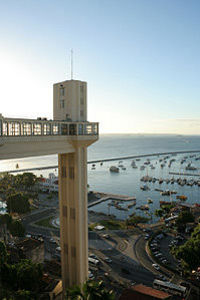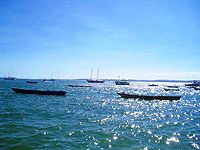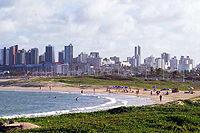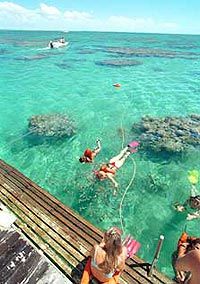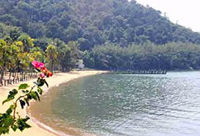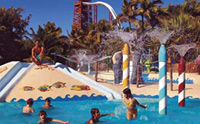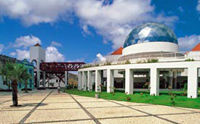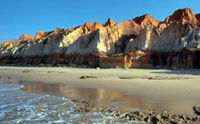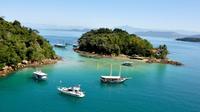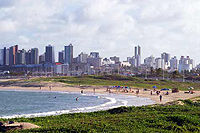
Rio offers all the advantages of a modern and dynamic megalopolis. The city is world famous for its mythical places: Copacabana beach or the statue of Christ the Redeemer at the top of Corcovado. Before leaving to visit Rio de Janeiro, discover 10 things to know about this important city in Brazil!
1. Where is Rio de Janeiro located?
Rio is the second largest city in Brazil, on the South American continent. Enjoy the panorama offered by the statue of Christ the Redeemer, at the top of Corcovado, to take a look around Guanabara Bay, where Rio is located. This huge construction is located at the top of a 710 meter high mountain and marks one of Rio's unmissable key points. It also offers a point of view on the "Sugar Loaf", a peak overlooking the sea, accessed by a cable car.
 Christ the Redeemer at the top of Corcovado
Christ the Redeemer at the top of Corcovado
2. When to go to visit Rio de Janeiro?
You can visit Rio de Janeiro all year round depending on your desires or your budget. Brazil being located under the Equator, the seasons are reversed, here are some details to better organize your stay:
- During winter (June, July and August) daytime temperatures vary between 15 and 25 ° C. Night falls around 17:30 p.m. and the thermometer goes down. In addition, the sky is often overcast, but does not prevent you from relaxing on the beach. Be careful, however, of the waves, which can be strong during this period.
- Summer runs from December to February. Avoid visiting Rio during the holiday season: prices go up and many tourist spots are closed. From the beginning of January the cariocas are preparing for the carnival: the streets fill up with musical groups who come to rehearse and the atmosphere is festive. Despite the high temperatures, now is the perfect time to go to Rio!
- Visit Rio during Carnival in February, can be an extraordinary experience. Be aware, however, that prices are soaring and that many shops or museums are closed.
- Autumn and spring are good times to visit Rio: the temperatures are pleasant, the sun is shining and the beaches are full!
 Ipanema
Ipanema
3. What budget to plan on site?
For such a tourist city, Rio de Janeiro has remained accessible for travelers: the cost of living is around 30% cheaper there than in France. Here is the budget to plan per day and per person to visit Rio in the best conditions:
- In backpacker mode: count around 30 € / day. With this budget you will stay in a youth hostel or in a small standard hotel. You can get your fill in street stalls or in unpretentious restaurants and do plenty of free activities while riding the bus. Enjoying the beach, for example, will not cost you a penny!
- With a budget of around 50 € / day, you can have more comfort: a nice and well placed hotel and restaurants with more elaborate cuisine. You can also visit the must-sees of the city without restricting yourself.
- From 80 € per day and per person, you can really treat yourself! Stay facing the beach, for example, or dine in good restaurants. Some shopping trips can also be put on the program without having to spend too much money!
4. How to go to Rio de Janeiro from France?
The plane is the easiest and fastest way to visit Rio de Janeiro. The average duration for a direct flight is approximately 11:15, depending on weather conditions. Depending on the season, return tickets cost between € 800 and € 1200. As often, it is better to do it as soon as possible for your reservations. Rio airport has recently been adapted to receive the Airbus A380. Some companies therefore offer this plane (Air France and Lufthansa for example) to reach Europe in Brazil. In addition to greater comfort, it reduces the journey time a little.
 Rio aerial view
Rio aerial view
If you have a lot of time and the desire for an extraordinary experience, you can also go to Rio by boat. The trip from Marseille takes about 20 days to reach the Brazilian coast at Fortaleza, the boats then descend to Rio making several stops. If you choose this option, know that the cost is quite high (at least € 800 one way trip per person) and that the price will depend on the vessel borrowed: on a freighter or on a cruise, it can go from simple to quintuple!
5. How to get around the city?
Metro, bus, tram, taxis… all these means of transport will allow you to visit Rio de Janeiro up and down and across!
- By Metro: 2 lines crisscross the city on more than 40 km of trains. Modern, safe and inexpensive, it is the ideal means of transport! The metro operates from 5 a.m. to midnight (a little less on Sundays and public holidays) and a few cars are reserved for women during rush hour (they are marked with a pink sticker).
- By bus: the network is very dense and serves all corners of the city. However, it is not necessarily easy to navigate. It is therefore better to plan your trip in advance or use Google Maps if you have a mobile connection. On board you will be greeted by a ticket clerk, in addition to the driver, to whom you can pay for your trip.
- By tram: present mainly in the Centro. A nice experience: take the Bonde, a replica of a Portuguese tram from the beginning of the 1750th century, which joins Santa Teresa from the center via the aqueduto da Carioca which dates from XNUMX.
- By taxi : essential if you want to travel outside of public transport hours. During the day, this is not the most suitable solution: the traffic is dense and the journey times extend. In addition, they are quite expensive.
- In Uber: half the price of a taxi, this system is extremely popular in Rio! This can be useful, for example, to go to the airport or if there are several of you.
- By bike : very suitable for going from beach to beach, especially on Sundays when the seafront is closed to cars!
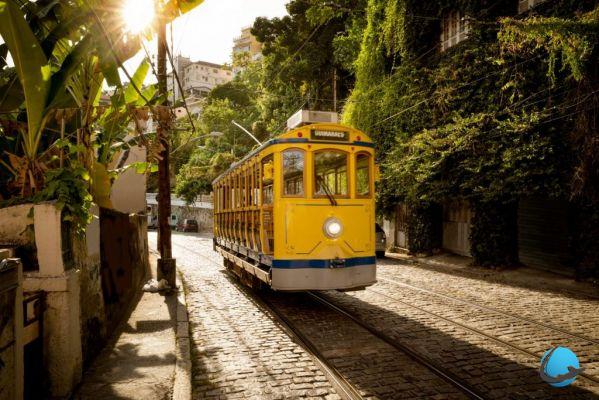 Tram in the Santa Teresa district
Tram in the Santa Teresa district
6. What are the culinary specialties of Rio de Janeiro?
Visiting Rio is also to experience the local cuisine: something to amaze your taste buds! In addition to some local specialties, here are some culinary experiences not to be missed:
- At every street corner you will find lanchonetes, perfect for a quick meal or for travelers on a budget. They often offer well-filled sandwiches.
- Brazilian curiosity: ao kilo restaurants. The principle is simple: you fill your plate, put it on the scale and pay by the kilo! By traveling with children this is a perfect solution!
- All-you-can-eat buffets, rodizios, offer a wide choice of vegetables, marinated meats or seafood. It is an advantageous formula for big eaters or the curious who want to taste everything!
- Saturday is the traditional day of the feijoada. Many restaurants offer it that day. It is a kind of Brazilian cassoulet with black beans and pork, accompanied by forofa, seasoned cassava flour. A pure delight!
- Eat at least once in a churrascaria: these restaurants serve a variety of grilled meats. The waiters go from table to table with a number of kebabs, each more appetizing than the next! Everything is at will with a buffet of accompaniments included.
- On the beaches, street vendors will often offer you cheese skewers surrounded by aromatic herbs and grilled before your eyes. It's a delight, especially at aperitif time with a glass of Caipirinha, the local ti-punch!
 Brazilian Feijoada
Brazilian Feijoada
7. Where to sleep, in which neighborhood to stay?
In terms of accommodation, everything will depend on your budget and your desires! In general, the closer you are to the beaches, the higher the prices will be. If you want to be able to walk there, look at the apartments on Airbnb, they are often the cheapest! Here are some tips for choosing the right neighborhood and visiting Rio without spending too much time in transport.
For a seaside stay
Do you want a seaside holiday but don't know which beach to choose? Here are some benchmarks: Copacabana is the most popular, this is where accommodation will be the most affordable. It welcomes thousands of travelers but also the inhabitants of Rio de Janeiro, nicknamed the “cariocas”. Facing the beach, is also one of the most luxurious hotels in Rio: the Copacabana Palace - it is recommended for visitors with full purses. Other, more affordable hotels are also located on the seafront. By booking online, at the last minute for example, it is even possible to find rooms there at low cost. As for the beaches of Ipanema and Leblon, they are more chic and upscale, the prices are affected but the beaches are more beautiful!
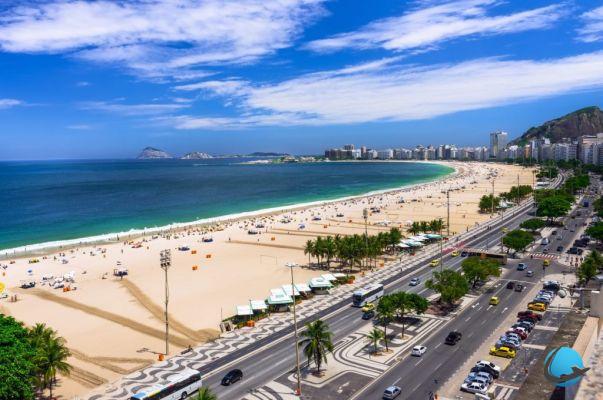 La plage de Copacabana
La plage de Copacabana
For an authentic stay
For accommodation with charm, in a guest house for example, stay in the district of Santa Teresa may be a good option. Small cobbled streets, tiny shops that contain treasures, colorful houses… you will have the impression of being in a village! Only problem : you will have to use public transport to go to the beach and it is quite out of the way.
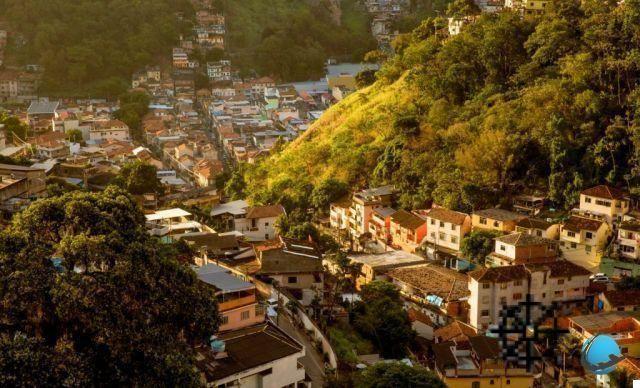 Santa Teresa
Santa Teresa
For party animals
If you want to party and be the center of the action, Lapa district is the place to be! Expect, on the other hand, not to sleep much because the streets are noisy ...
The bon compromis
A good compromise can be to stay in les quartiers de Glória, Catete or Flamengo. Better located (between the center and the beaches), they offer comfortable accommodation for a reasonable budget.
8. What are the main activities to do?
Depending on how much time you have to visit Rio, you may need to make choices. Here are our must-haves not to be missed:
- Take the cable car to Sugar bread. The view at the top over the entire bay of Rio is breathtaking.
- Climb to Christ the Redeemer of Corcovado. An exceptional view will be offered to you from the symbol of the city.
- Stroll through the cobbled streets of the district of Santa Teresa, a district that has a crazy charm! Nicknamed the “Montmartre” of Rio de Janeiro and built on the mountainside, the Santa Teresa district can be visited for its convent, but also for its bars and restaurants.
- Lounging on The beaches from Copacabana, Ipanema or Leblon and observe the local life. An activity that the Cariocas have elevated to the level of art!
- Need a little greenery? Go for it Tijuca National Park, it is the largest urban forest in the world!
 Waterfall in Tijuca Forest
Waterfall in Tijuca Forest
- Devote an evening to enjoy the night life. Musical bars or dance shows, the inhabitants of Rio love to party!
- Even if you are not a fan, go see a soccer match at the maracana stadium is an experience in itself! The Cariocas go there with their families and the fervor of the supporters is kind.
- It is in the month of February that all the fervor and the sense of the festival of the cariocas are expressed. During the 4 days of the carnival - it takes place the weekend before Shrove Tuesday - the heart of the city beats to the rhythm of the samba and comes alive with dances and costumed parades of the entire population.
9. What to bring back as a souvenir from Rio?
Rio de Janeiro is a popular shopping destination. In addition to shopping centers in the city center, the large beaches of Copacabana or Ipanema host the windows of multiple shops. Star article in stores, the famous "Havaïanas" thongs, in the colors of Brazil. Soccer jerseys are also featured in shops (Rio has no less than 4 professional clubs) and constitute an unusual memory.
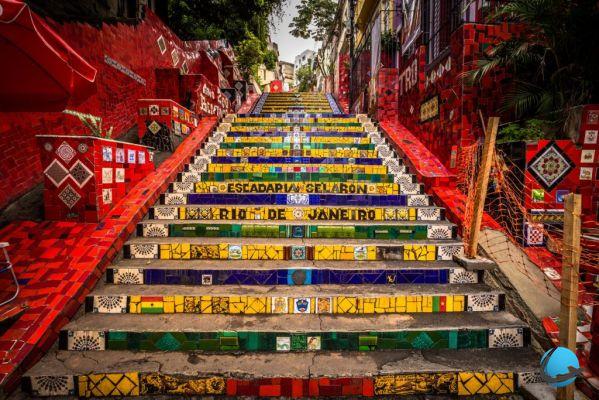 The Selaron staircase, made for the football world cup in 1994
The Selaron staircase, made for the football world cup in 1994
10. Practical information
Here is all the practical information that will help you visit Rio de Janeiro, even at the last minute:
- Health : Keep up to date with your vaccines and plan to do the one against yellow fever. It is also compulsory if you come from another Latin American country.
- Cash : The Brazilian currency is the Réal (Réais in the plural).
Visit Rio de Janeiro to a samba tune!
Once you've scoured the neighborhoods of Rio de Janeiro, why not go into the Brazilian countryside? Discover the Pantanal, a superb nature reserve, where you can try your hand at ecotourism!





